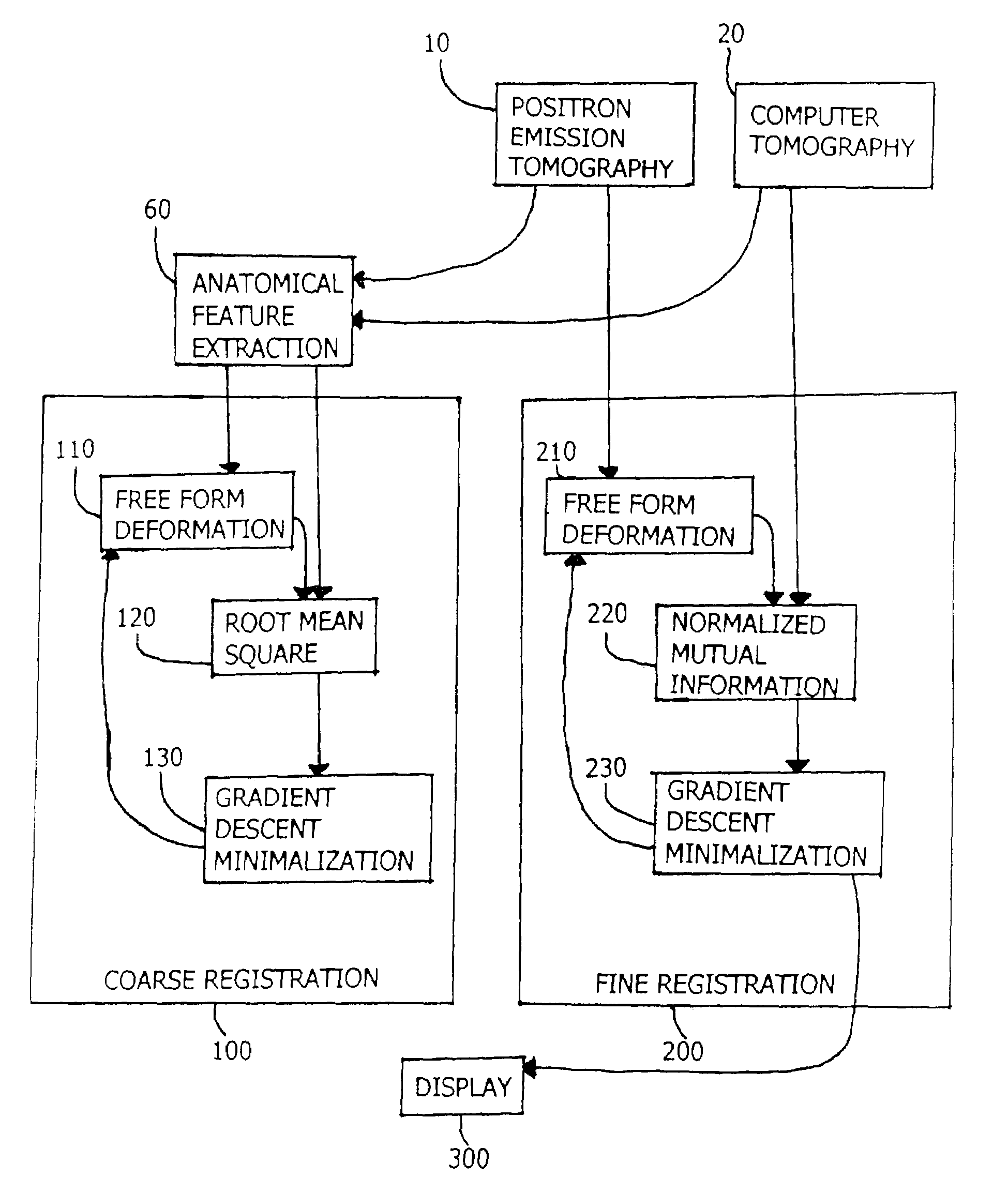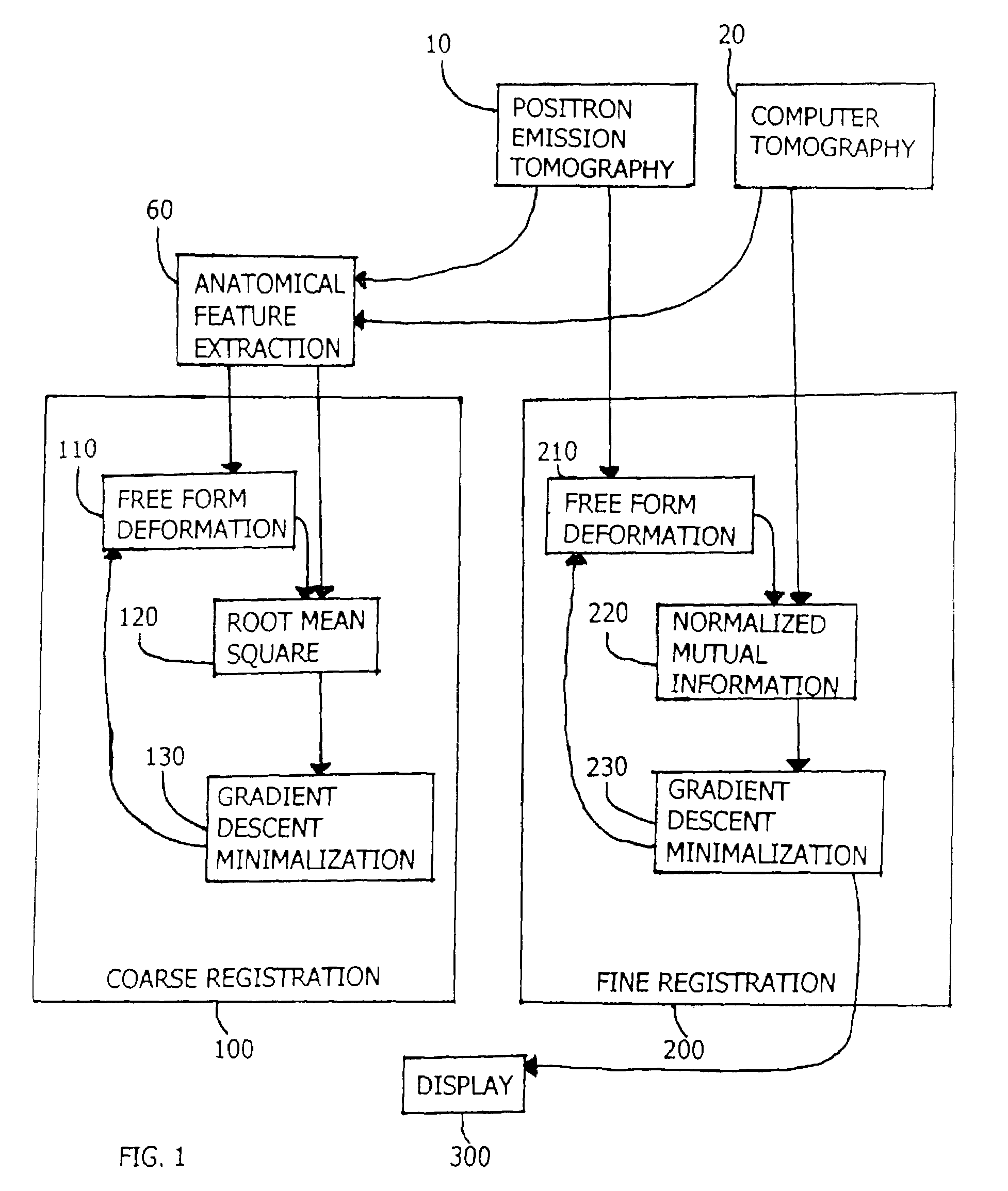Registration of thoracic and abdominal imaging modalities
a registration technology, applied in the field of thoracic and abdominal imaging registration, can solve the problems of not using a rigid approach with significantly more degrees of freedom, and achieve the effects of accurate registering, accurate registering, and accurate registering
- Summary
- Abstract
- Description
- Claims
- Application Information
AI Technical Summary
Benefits of technology
Problems solved by technology
Method used
Image
Examples
example 1
[0096]A first set of 11 CT, emission and transmission PET scans of the thoracic and abdominal regions were analyzed using the method of this patent application. This was a inhomogeneous data set because the data were derived a three different sites and varying machines and clinical protocols were used. A second set of 4 images were obtained using a combination PET-CT acquisition system, the Discovery LS PET / CT System, obtained from General Electric Medical Systems, Waukesha Wis. The process used for analysis has been designed to be independent of the scan parameters. In general, the CT images had a resolution of 512×512 pixels in the xy plane and between 46 and 103 slices, with voxel dimensions approximately 0.74×0.74×7.5 mm3. PET images had a resolution of 128×128 pixels in the xy plane with 163 to 205 slices, with voxel dimensions around 4.297×4.297×4.297 mm2. In the PET-CT combined machine data set, the CT images had a resolution of 512×512 and the PET images 128×128 pixels in th...
example 2
[0101]A third set of 18 CT, emission and transmission PET scans of the thoracic region were analyzed using the method of this patent application. This was a inhomogeneous data set because the data were derived a three different sites and varying machines and clinical protocols were used. The process used for analysis has been designed to be independent of the scan parameters. In general, the CT images had a resolution of 256×256 pixels in the xy plane and between 60 and 125 slices, with voxel dimensions approximately 1.0×1.0×5.0 mm2. PET images had a resolution of 144×144 pixels in the xy plane with 160 to 230 slices, with voxel dimensions around 4.0×4.0×4.0 mm3.
[0102]The evaluation method of Example 1 was used with Example 2. Table 2 shows the performance of this evaluation method for the different anatomical regions.
[0103]
TABLE 2RegionMeanVarianceChest Wall0.6700.02Mediastinal Wall (heart)0.9350.09Diaphragmatic Wall (liver)0.7200.11
[0104]Table 2 shows that the evaluation method is...
PUM
 Login to View More
Login to View More Abstract
Description
Claims
Application Information
 Login to View More
Login to View More - R&D
- Intellectual Property
- Life Sciences
- Materials
- Tech Scout
- Unparalleled Data Quality
- Higher Quality Content
- 60% Fewer Hallucinations
Browse by: Latest US Patents, China's latest patents, Technical Efficacy Thesaurus, Application Domain, Technology Topic, Popular Technical Reports.
© 2025 PatSnap. All rights reserved.Legal|Privacy policy|Modern Slavery Act Transparency Statement|Sitemap|About US| Contact US: help@patsnap.com



